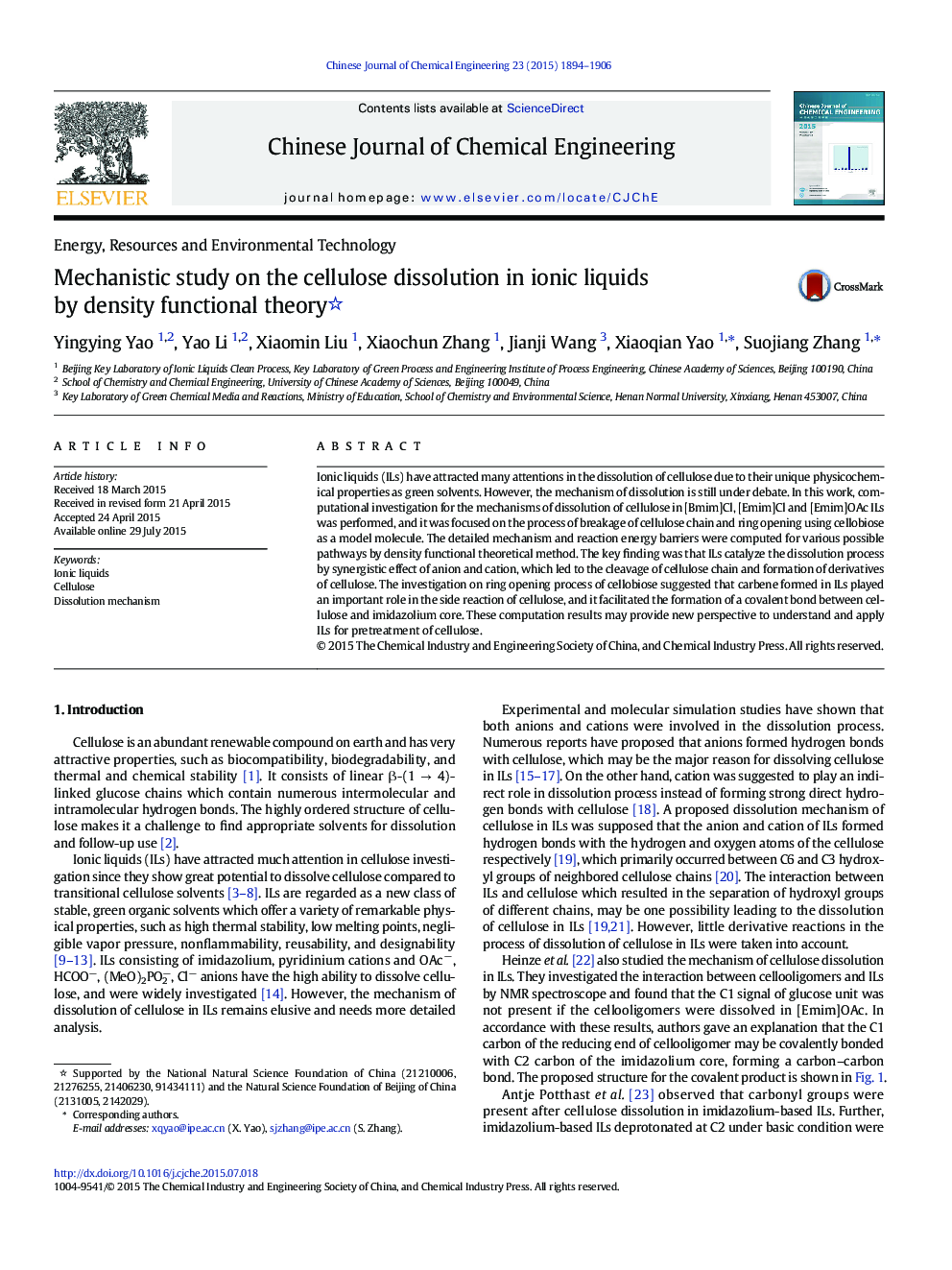| Article ID | Journal | Published Year | Pages | File Type |
|---|---|---|---|---|
| 167970 | Chinese Journal of Chemical Engineering | 2015 | 13 Pages |
Ionic liquids (ILs) have attracted many attentions in the dissolution of cellulose due to their unique physicochemical properties as green solvents. However, the mechanism of dissolution is still under debate. In this work, computational investigation for the mechanisms of dissolution of cellulose in [Bmim]Cl, [Emim]Cl and [Emim]OAc ILs was performed, and it was focused on the process of breakage of cellulose chain and ring opening using cellobiose as a model molecule. The detailed mechanism and reaction energy barriers were computed for various possible pathways by density functional theoretical method. The key finding was that ILs catalyze the dissolution process by synergistic effect of anion and cation, which led to the cleavage of cellulose chain and formation of derivatives of cellulose. The investigation on ring opening process of cellobiose suggested that carbene formed in ILs played an important role in the side reaction of cellulose, and it facilitated the formation of a covalent bond between cellulose and imidazolium core. These computation results may provide new perspective to understand and apply ILs for pretreatment of cellulose.
Graphical abstractThe mechanism of dissolution of cellulose in ionic liquids (ILs) was investigated by density functional theoretical method. ILs would lead to the cleavage of cellulose chain by synergistic effect of anion and cation. The acetate-based ILs can form N-heterocyclic carbene, which will facilitate the ring opening reaction to form a covalent bond between cellulose and imidazolium core.Figure optionsDownload full-size imageDownload as PowerPoint slide
